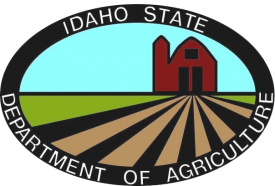by Thomas Woolf, Idaho State Department of Agriculture
Aquatic invasive species (AIS) are one of the most significant threats to the lakes and rivers of our region. AIS disrupt aquatic ecosystems, outcompete native species and cause significant impacts to water-based infrastructure and recreation. Most of these species are transported when they “hitchhike” on boats from one waterbody to another. AIS can include aquatic plants, snails, clams, and mussels.
Zebra and quagga mussels are invasives of particular concern because they can damage infrastructure and the environment. These mussels can survive out of water for up to 30 days, and in their planktonic stage can travel, invisible to the naked eye, in any standing water. Consequently they are very mobile and well adapted to travel overland on boats. The Northwest is the last area in the U.S. that doesn’t have these mussels, so we have a unique opportunity to prevent infestation.
Idaho works to halt the spread of AIS
 The Idaho State Department of Agriculture (ISDA) runs Idaho’s AIS program; inspecting watercraft is the main tool for preventing the spread of invasives. Seventeen stations will operate in Idaho from February to September, 2015, mostly near state borders. Staff at the stations inspect boats and educate the boating public about invasive species. Funding for this effort is provided by an Invasive Species Sticker required for all watercraft that launch in the state.
The Idaho State Department of Agriculture (ISDA) runs Idaho’s AIS program; inspecting watercraft is the main tool for preventing the spread of invasives. Seventeen stations will operate in Idaho from February to September, 2015, mostly near state borders. Staff at the stations inspect boats and educate the boating public about invasive species. Funding for this effort is provided by an Invasive Species Sticker required for all watercraft that launch in the state.
Since the program began in 2009, over 150,000 watercraft have been inspected and more than 120 vessels have been intercepted with zebra or quagga mussels during that time. Boats come from throughout the United States and Canada to Idaho, and every year inspections yield aquatic invasives. These boats, headed for spots throughout the Northwest (about 30% destined for Idaho), come primarily from the Great Lakes, but also from Lakes Mead, Havasu, Pleasant, and Powell. (Learn more about watercraft inspections at the ISDA Invasive Species web page )
Vessels that have recently been in waters where zebra/quagga mussels are problematic are at high risk for transporting AIS because the mussels are so hard to spot. Most of these high risk boats are coming from Southwestern waterbodies like Lakes Mead, Havasu, Powell and Pleasant. When these vessels reach an inspection station, they are thoroughly examined and many are hotwashed to make sure they are free of AIS. Local residents who spend the winter in the Southwest should contact their state’s invasive species program if they are coming home with a boat. These boats must be inspected to make sure they are safe before being launched in our region.
Idaho’s Watercraft Inspection Program relies on partners around the state for help. Many inspection stations are operated by local entities that are under contract to and trained by ISDA to conduct inspections. These local partners are critical to the operation of the program and provide local support for invasive species prevention. ISDA also partners with lake and homeowner associations to inspect watercraft and promote the critical Clean Drain Dry message.
Boaters can help stop AIS
When boaters make sure their boats are clean of dirt, algae and plant material, drained of all water, and dry, they help prevent the movement of AIS and protect the waters that we all enjoy. A boat that is cleaned, drained, and dry does not transport zebra or quagga mussels and also prevents the spread of invasive aquatic plants, snails, clams and fish pathogens. Boaters are encouraged to do their part to help protect our waters from AIS.
To learn more about invasive species and how you can stop their spread, visit: www.invasivespecies.wa.gov; www.wdfw.wa.gov/ais or
www.100thmeridian.org. Or go to http://www.idahoag.us/index.php and click on “environment.”









